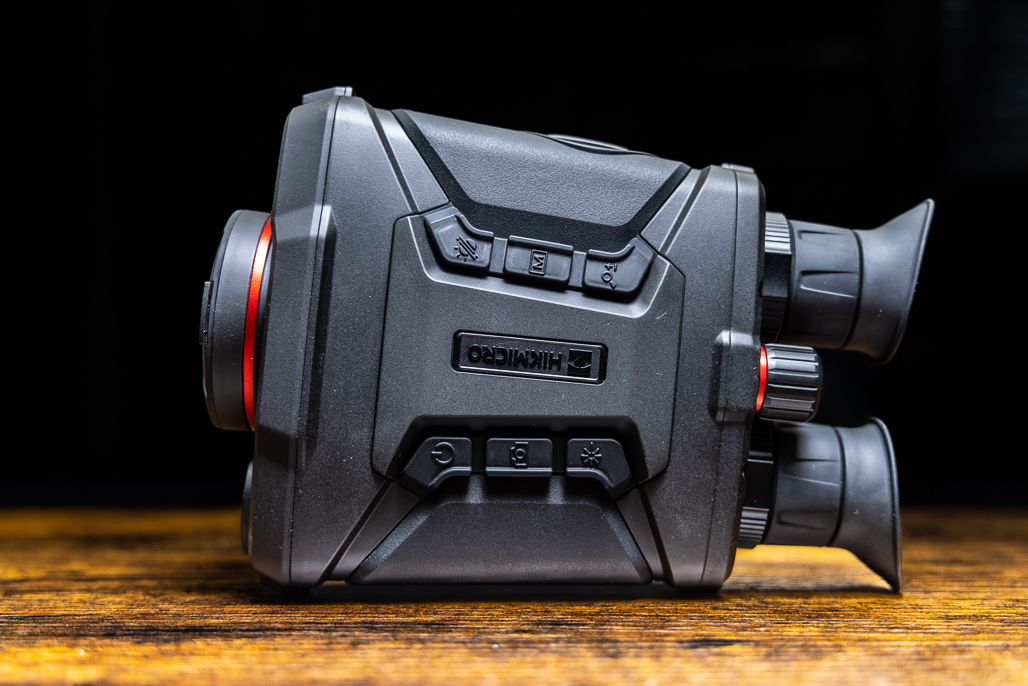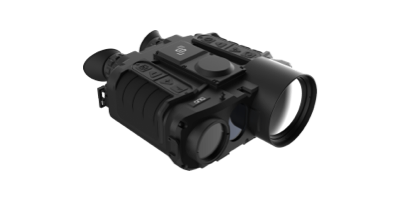-
Welcome to BirdForum, the internet's largest birding community with thousands of members from all over the world. The forums are dedicated to wild birds, birding, binoculars and equipment and all that goes with it.
Please register for an account to take part in the discussions in the forum, post your pictures in the gallery and more.
You are using an out of date browser. It may not display this or other websites correctly.
You should upgrade or use an alternative browser.
You should upgrade or use an alternative browser.
New toys from Zeiss (1 Viewer)
- Thread starter Ignatius
- Start date
More options
Who Replied?
It is important to look at the specifications and compare them to other offerings. The sensors and electronics for thermal imagers only come from a limited number of suppliers. There may very well be an imager with the exact same guts as the Zeiss ones but with some no-name branding for much less money.
Ignatius
Naturwissenschaftliches Nudelaug

Sounds like a good idea worth investigating, Mono.It is important to look at the specifications and compare them to other offerings. The sensors and electronics for thermal imagers only come from a limited number of suppliers. There may very well be an imager with the exact same guts as the Zeiss ones but with some no-name branding for much less money.
BUT: "The innovative smart image processing algorithm (ZSIP) provides the observer with the ability to detect and identify species reliably. In combination with the 640 x 480 sensor with 12 micron pixel pitch and the 1024 x 768 AMOLED display the ZSIP delivers high-contrast and detailed images. It has been developed by ZEISS in Germany." - from the DTI 6 description. This at least is obviously a singular facet of the Zeiss.
And as far being a tool for hunters goes: the press release is headed "ZEISS thermal imaging cameras for a new way of birding". Stefan Gerner, Product Manager Nature Observation, himself apparently an avid birder, explains in the press release some of the thinking behind these new products.
Anyway, as with so many things, these can be used for a multitude of purposes. Those who believe them to be evil hunting tools can even pride themselves in repurposing them for peaceful and constructive uses, such a birding or general wildlife observation. Closer study of the material linked on the Zeiss page will indeed reveal some very sharp imaging. Whether this is marketing or indeed proves to be real life experience remains to be seen and tested.
Yeah, I'm not sure either."observations that are rich in detail"
No such detail is showed on the web page. What kind of image you can see through such optics? Mystery.
Maybe is for hunters?
I have a "mid range" thermal monocular. It's great at showing me there is something there.
However, the daytime use is very much weather dependent.
And as for identifying species, I've come to the conclusion this is not possible with a thermal image, beyond the outline shapes.
If it is the thermal image augmented with regular optics, then this would be potentially incredible.
(These seem a bit cheap for that level of leading edge tech!)
John A Roberts
Well-known member

Hi Ted (post #3),
As you query "observations that are rich in detail" *
A Google search of 'zeiss dti thermal imaging camera' - presumedly showing better examples chosen by Zeiss - includes:

The takeaway seems to be:
Yes, you are going to see much more than you would with a conventional glass optic,
but while the images are high contrast, they're low resolution.
So using the technology to observe fine detail, would seem to be literally unclear!
John
* Hi Peter, just as I was about to post, you beat me to it!
As you query "observations that are rich in detail" *
A Google search of 'zeiss dti thermal imaging camera' - presumedly showing better examples chosen by Zeiss - includes:

The takeaway seems to be:
Yes, you are going to see much more than you would with a conventional glass optic,
but while the images are high contrast, they're low resolution.
So using the technology to observe fine detail, would seem to be literally unclear!
John
* Hi Peter, just as I was about to post, you beat me to it!
Last edited:
That's ok. It's nice to be in agreement with someone for a change!!
The fundamental flaw, is they highlight differences in temperature, not differences in plumage. So ears , brains, and I don't know, what ever else exudes heat are exaggerated.
Subtelties like wing bars or colour will never be observed.
Edit, Thus my approach has always been for the cheapest model that can detect, and don't worry about the superior "image quality".
The cheaper pulsars, and possibly the Flir models would be my recommendation.
( I've discovered the phone thermal cameras aren't good for nature!)
The fundamental flaw, is they highlight differences in temperature, not differences in plumage. So ears , brains, and I don't know, what ever else exudes heat are exaggerated.
Subtelties like wing bars or colour will never be observed.
Edit, Thus my approach has always been for the cheapest model that can detect, and don't worry about the superior "image quality".
The cheaper pulsars, and possibly the Flir models would be my recommendation.
( I've discovered the phone thermal cameras aren't good for nature!)
Last edited:
Since a number of years, I do own the Zeiss NV (night vision, not thermal imaging), but for thermal, I preferred the Leica Calonox for its more intuitive handling (I guess it provides roughly the same performance as the equivalent Zeiss model).
It has proven useful in identifying wildlife e.g. at the edge of forests, I now use it much more often than the night vision device.
For those not familiar with the technology, try the following to amaze your friends or kids: without being seen, press your hand against a cool wall, then tell your friends there is an ominous sign on your wall and hand them the thermal to observe; the hand on the wall will remain visible for quite some time 😀
It has proven useful in identifying wildlife e.g. at the edge of forests, I now use it much more often than the night vision device.
For those not familiar with the technology, try the following to amaze your friends or kids: without being seen, press your hand against a cool wall, then tell your friends there is an ominous sign on your wall and hand them the thermal to observe; the hand on the wall will remain visible for quite some time 😀
I bought a Pulsar XQ38 a few years ago and I like it. However, these devices are evolving very quickly and coming down in price. They are really good for detection, and to some extent for identification.
I am not planning to upgrade at least until the technology matures a bit more.
They are a lot of fun to use, and also they help you to keep safe when you are out and about at night.
I am not planning to upgrade at least until the technology matures a bit more.
They are a lot of fun to use, and also they help you to keep safe when you are out and about at night.

I also considered the Leica Calonox, but it's really just a rebadged InfiRay so I cut out the middleman and got an InfiRay Zoom ZH38 instead.
The goal is to detect owls and other hard to spot birds.
The goal is to detect owls and other hard to spot birds.
kestrel1
Well-known member
I bought year ago Pulsar Axion 2 XG35 and really handy companion for night walks. Performance wise good enough for me, but do not expect any miracles from the thermal vision, yet it can bring breathtaking moments. Still magnification is not high enough, and you need to be close to subjects to get decent view. Of course can help with getting know how owls spend the night 
Has anyone experimented with security cameras to replace trail cams? There are some stand alone models that come with internal storage, they record in color and infrared and, if there is happen to be an internet connection, you can check them remotely. Alternatively you can use a hotspot (access point) without internet and can still check them remotely but you are limited with distance. Else, you can just set them up and check the footage when you pick them up.
My wife is getting me one for my birthday (that I researched) and it should be with me this week (EUR 70, got a deal) but they are promising. The only think s that they are as white as a washing machine so if it is a keeper I will have to customise it.
My wife is getting me one for my birthday (that I researched) and it should be with me this week (EUR 70, got a deal) but they are promising. The only think s that they are as white as a washing machine so if it is a keeper I will have to customise it.

There are very few true thermal binoculars, in two separate sensors. One can get a single sensor with two occulars.

 www.scottcountry.co.uk
www.scottcountry.co.uk
There are also units with binocular form that have different sensors in each tube. Usually thermal in one and active IR in the other.

 www.senopex.com
www.senopex.com

HikMicro Raptor PRO RQ50L Thermal Imaging Binoculars
The HikMicro Raptor RQ50L Thermal Binoculars feature a bi spectrum dual imaging system combining a thermal imaging sensor with a day and night vision optical sensor and an integrated laser rangefinder. With an enviable sub 20mk NETD sensitivity, via a 640x512 12 micron sensor, the HikMicro...
 www.scottcountry.co.uk
www.scottcountry.co.uk
There are also units with binocular form that have different sensors in each tube. Usually thermal in one and active IR in the other.

DUO Dual Vision Thermal Binoculars - senopex
Similar threads
Users who are viewing this thread
Total: 2 (members: 0, guests: 2)





